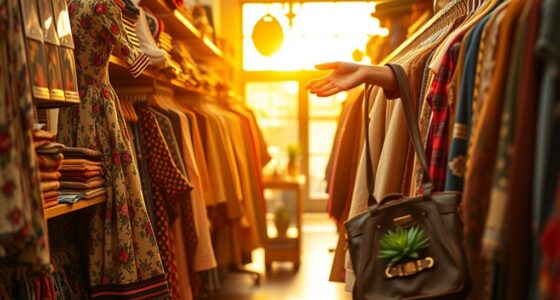Sustainable practices in luxury fashion are reshaping how brands operate, favoring eco-friendly materials, innovative manufacturing, and industry collaborations. As a consumer, you see brands setting ambitious goals for reducing emissions and adopting circular designs, which boosts transparency and trust. These efforts help preserve the environment while meeting your desire for ethically made products. If you stay aware of these trends, you’ll discover how luxury brands are creating a greener, more responsible future for fashion.
Key Takeaways
- Sustainable practices reduce environmental impact by lowering carbon footprints and promoting circular economy principles in luxury fashion.
- Industry collaborations drive innovation, enabling scalable eco-friendly materials and sustainable manufacturing methods.
- Consumer demand for ethically made, transparent products influences brands to adopt greener, socially responsible practices.
- Adoption of advanced sustainable materials and digital fabrication improves durability and aesthetic quality in luxury items.
- Sustainable initiatives enhance brand reputation, fostering loyalty and differentiation in a competitive luxury market.
Transformative Material Innovations Driving Sustainability
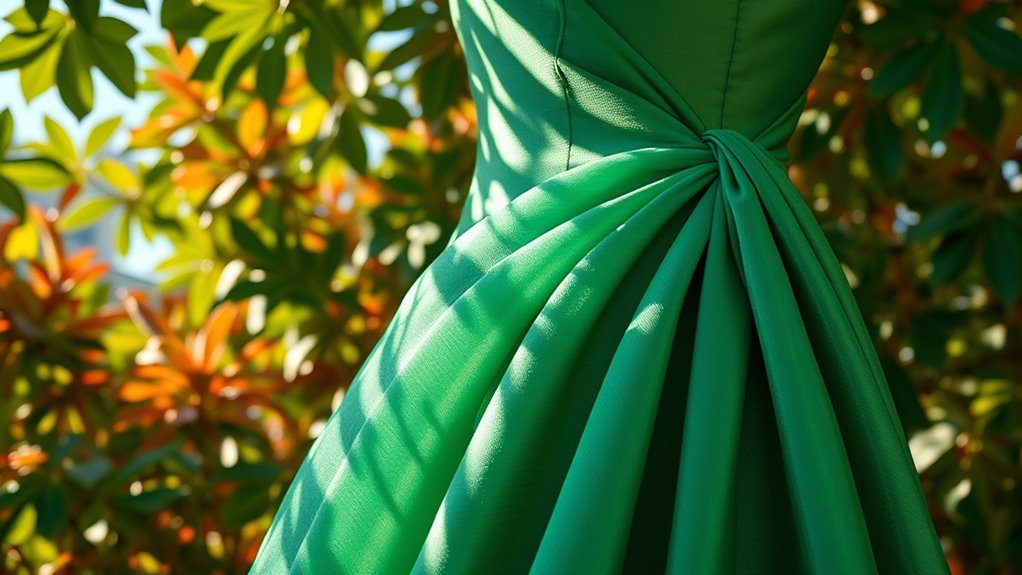
Transformative material innovations are revolutionizing sustainability in luxury fashion by replacing traditional animal-derived leathers with eco-friendly alternatives. You now have access to a wide array of sustainable materials, including plant-based textiles, biodegradable fibers, and lab-grown proteins, which markedly reduce environmental impacts. Mushroom leather, for example, offers a biodegradable fiber derived from fungi, providing a cruelty-free alternative to traditional leather. Brands like Prada and Stella McCartney are developing innovative materials such as bioengineered Sylvania and mushroom-based Mycelium Leather, showcasing material innovation at its best. Regenerated nylon, like Prada’s Re-Nylon, uses recycled plastic waste, further pushing eco-friendly fashion forward. These biobased materials not only enhance sustainability but also enable luxury brands to create stylish, high-quality collections while considerably reducing their carbon footprint. Sustainable material options are becoming increasingly vital for the future of eco-conscious luxury fashion. Additionally, ongoing research into climate change impacts influences the development of new sustainable materials that can withstand environmental challenges, emphasizing the importance of innovative research in advancing eco-friendly solutions. Furthermore, the integration of circular economy principles encourages the reuse and recycling of materials, reducing waste and conserving resources in the fashion industry.
Industry-Wide Collaborations Shaping Eco-Friendly Standards
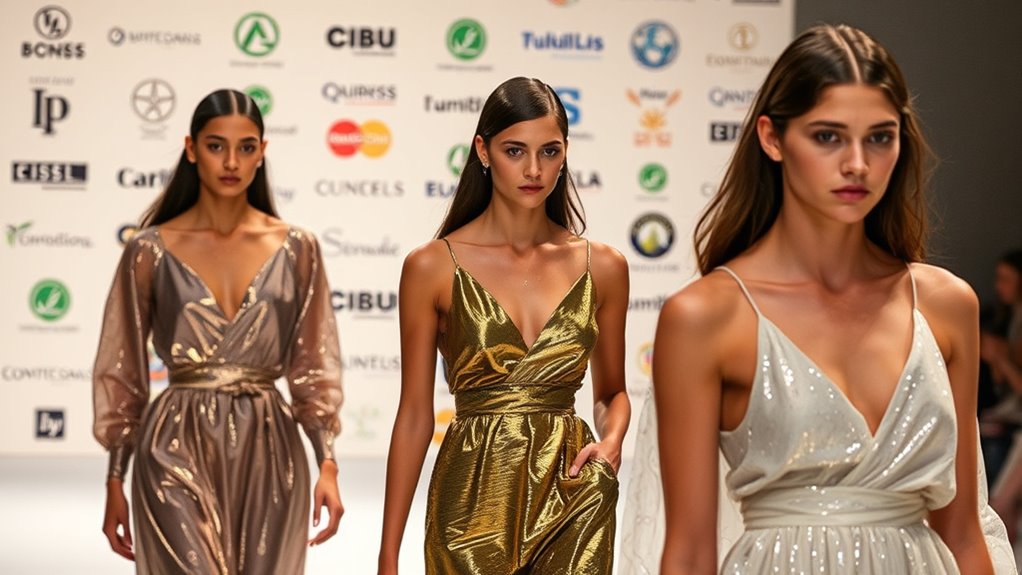
Industry-wide collaborations are pivotal in establishing and advancing eco-friendly standards within luxury fashion. By joining forces through industry collaborations, brands like Gucci, Burberry, and Hermès work together to set ambitious sustainable standards. These partnerships promote transparency and traceability, ensuring ethical sourcing and eco-friendly practices across supply chains. Initiatives such as The Fashion Pact, COP26, and COP28 unite luxury brands, policymakers, and startups to push for net-zero emissions and increased renewable energy use. Material innovation plays a key role, with collaborations enabling the development of sustainable materials like regenerative nylon and the use of platforms like LVMH’s Aura blockchain and Kering’s innovation labs. These collective efforts help shape a sustainable future, making eco-conscious practices the new normal in luxury fashion. Additionally, transparency and disclosure are emphasized to maintain consumer trust and ensure compliance with industry standards. Incorporating risk assessment strategies, such as evaluating potential security vulnerabilities, further supports these initiatives by safeguarding the integrity of supply chains and data. Furthermore, fostering a culture of collaborative innovation among stakeholders accelerates the adoption of emerging sustainable technologies and practices. Moreover, integrating sustainable accessories and merchandise into product lines encourages consumers to participate in eco-friendly practices and helps promote environmental responsibility.
Strategic Targets and Milestones of Leading Luxury Brands
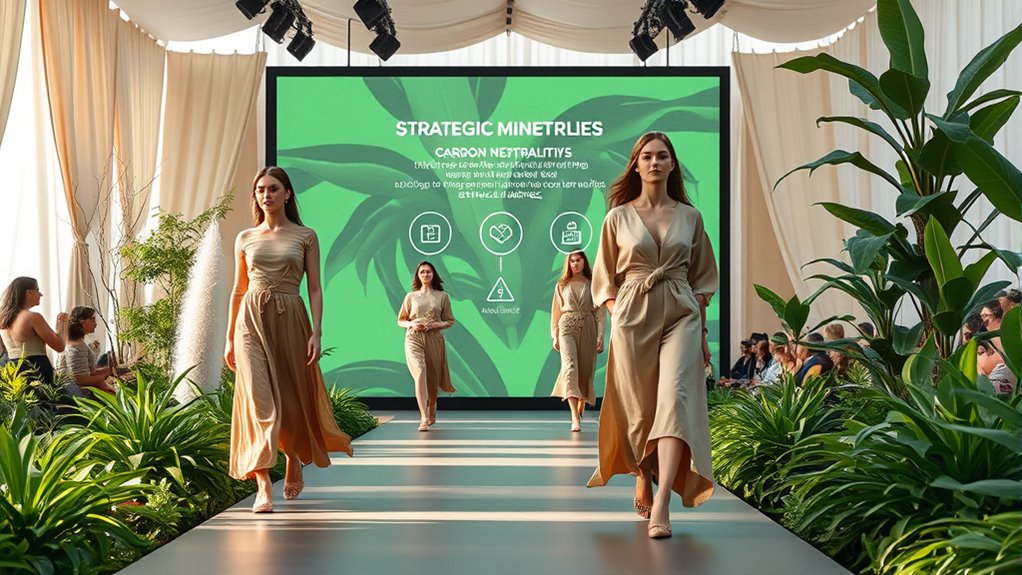
Leading luxury brands are setting ambitious targets to advance their sustainability efforts and demonstrate accountability. Gucci aims to cut its carbon footprint by 55% and achieve 100% raw materials traceability by 2025, with a long-term goal of halving GHG emissions. Chanel’s 10-year climate plan targets a 50% reduction in operational impacts, a 40% decrease in value chain impacts, and shifting to 100% renewable energy by 2025. Hermès plans to become net zero by 2050, emphasizing circularity and launching products made from mushroom-based Mycelium Leather. Burberry has achieved carbon-neutral operations and aims for climate positivity by 2040, targeting a 90% reduction in Scope 3 emissions by 2030. Louis Vuitton commits to reducing its carbon footprint by 55% by 2030, responsibly sourcing 78% of raw materials and using recyclable packaging. Additionally, vetted sustainability initiatives are increasingly integrated into brand strategies to ensure transparency and accountability. Furthermore, incorporating renewable energy sources like solar and wind can significantly enhance the sustainability of luxury brands’ operations and supply chains. Emphasizing circular economy principles, many brands are now designing products that prioritize durability, reuse, and recyclability to reduce waste and environmental impact. Implementing sustainable sourcing practices is essential for minimizing environmental footprints across the supply chain and aligning with consumer expectations.
Consumer Expectations and the Shift Toward Ethical Luxury
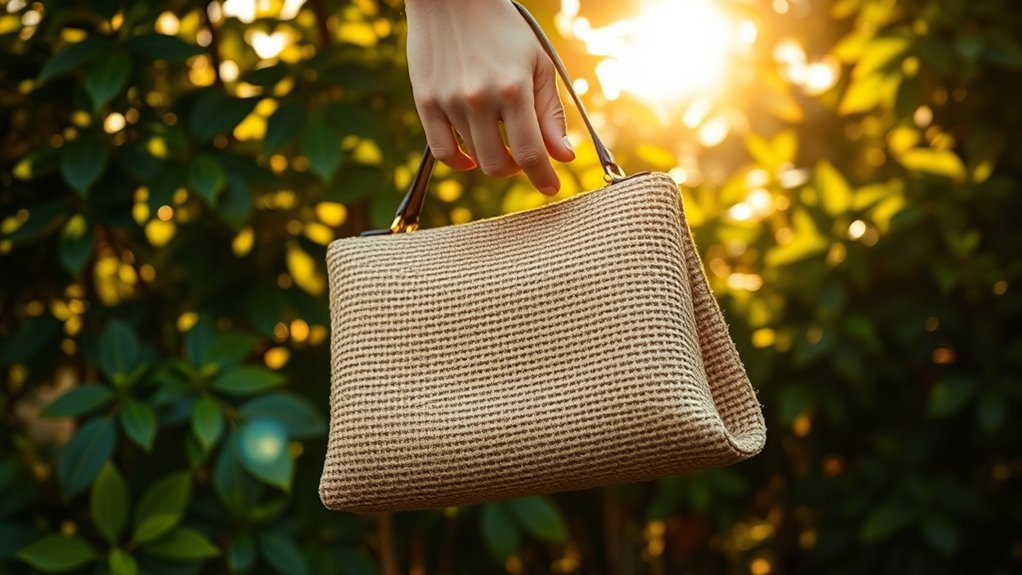
Have you noticed how consumer expectations are shifting in the luxury market? More luxury consumers now prioritize ethical luxury and sustainable practices when making decisions. Nearly half of US wealthy buyers consider a brand’s social responsibility essential, showing how ethical consumption influences loyalty and brand reputation. Millennials and Gen Z, who will make up 70% of the market by 2025, actively seek eco-friendly materials and brands with clear sustainability goals. The rise of second-hand luxury platforms reflects their desire to extend product lifespan and reduce waste. Brands that align with these values build trust by adopting transparent practices and offering ethically made collections. This shift toward ethical luxury isn’t just a trend; it’s a reshaping of consumer values that promotes a sustainable supply chain across the industry. Additionally, embracing creative practice can foster innovation in developing sustainable designs and solutions within the industry. Incorporating sustainable practices can further enhance brand credibility and meet the growing demand for eco-conscious luxury. Furthermore, integrating AI-driven data analytics can help brands better understand consumer preferences and tailor sustainable offerings more effectively.
Challenges and Opportunities in Achieving Full Sustainability

Achieving full sustainability in luxury fashion presents significant hurdles despite numerous innovative efforts. You face industry challenges like limited scalability of sustainable materials, such as lab-grown leather and biodegradable textiles, which are mostly confined to capsule collections due to high costs and production constraints. Complex, global supply chains hinder transparency and consistent adoption of eco-friendly technologies. The sector’s focus on continuous innovation and sales growth complicates aligning long-term environmental responsibility with profitability. High upfront investments and regulatory uncertainties slow widespread adoption of sustainable practices, while inconsistent ESG metrics make measuring progress difficult. Additionally, integrating sound design principles into communication and branding strategies can enhance consumer awareness and engagement around sustainability efforts. Moreover, adopting sustainable materials at a larger scale remains a key obstacle, as current options often lack the durability and aesthetic qualities expected in luxury products. Embracing innovative production methods, such as digital fabrication and circular design, offers promising avenues for overcoming these barriers. Exploring collaborative industry efforts can facilitate shared advancements and reduce costs, accelerating progress across the sector. Despite these obstacles, opportunities exist to leverage innovation and eco-friendly technologies, fostering industry-wide change. Overcoming these challenges can lead to a more sustainable future where luxury and environmental responsibility go hand in hand.
Frequently Asked Questions
Why Is Sustainability Important in Luxury Fashion?
Sustainability matters in luxury fashion because it helps reduce environmental harm and meets the growing demand from consumers like you who value ethical practices. When brands adopt eco-friendly materials and circular models, they show social responsibility and strengthen their reputation. You want to support brands that prioritize sustainability, ensuring your luxury purchases align with your values and contribute to a healthier planet for future generations.
How Does Sustainability Affect Fashion?
Sustainability affects fashion by shaping how you choose and perceive brands. When brands adopt eco-friendly materials and transparent practices, you’re more likely to trust and support them. It encourages innovation like recycling and repair services that extend product life. Your preferences shift toward ethical, environmentally conscious options, pushing the industry to reduce emissions and adopt sustainable models. Ultimately, sustainability influences your buying decisions and promotes a more responsible fashion industry.
What Is Gucci’s Sustainability Strategy?
Your focus is on Gucci’s sustainability strategy. They aim to cut their carbon footprint by 40% and guarantee full raw material traceability. You see them upcycling deadstock fabrics, banning fur, and using eco-friendly materials like organic cotton and recycled nylon. Gucci also fosters a circular economy through a recycling hub and sets measurable environmental goals, integrating sustainability into every part of their design, sourcing, and manufacturing processes.
Is Sustainable Luxury Fashion Possible?
You might wonder if sustainable luxury fashion is truly possible. The good news is, over 160 brands have committed to net-zero emissions by 2050, showing industry-wide dedication. Leading brands like Hermès and Gucci are creating eco-friendly materials, while targets like Gucci’s 50% greenhouse gas reduction by 2025 are ambitious yet achievable. With consumer demand for ethical goods rising, and innovative tech like blockchain increasing transparency, sustainable luxury is becoming a reality.
Conclusion
As you navigate the evolving landscape of luxury fashion, remember that embracing sustainable practices isn’t just a passing trend—it’s your modern-day Magna Carta for authenticity. With material innovations, industry collaborations, and clear targets, you have the tools to make a real difference. While challenges persist, your commitment to ethical luxury shapes a future where elegance and responsibility walk hand in hand, proving that even in the age of hustle, sustainability remains timeless.






